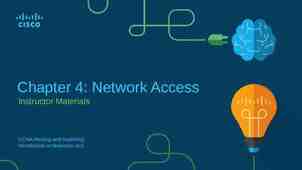The future of healthcare and infection prevention & control Jon Otter
46 Slides6.66 MB
The future of healthcare and infection prevention & control Jon Otter PhD FRCPath Director of Infection Prevention and Control [email protected] @jonotter Blog: www.ReflectionsIPC.com Slides: www.jonotter.net
Promoting antimicrobial stewardship Embedding digital systems to enhance our clinical services Preventing Gram-negative bloodstream infection Preventing SSI Preventing the transmission of SARS-CoV-2 in our hospitals
Promoting antimicrobial stewardship Embedding digital systems to enhance our clinical services Preventing Gram-negative bloodstream infection Preventing SSI Preventing the transmission of SARS-CoV-2 in our hospitals
ReAct.
But I would like to sound one note of warning There may be a danger, though, in underdosage. The time may come when penicillin can be bought by anyone in the shops. Then there is the danger that the ignorant man may easily underdose himself and by exposing his microbes to non-lethal quantities of the drug make them resistant. Here is a hypothetical illustration. Mr X has a sore throat. He buys some penicillin and gives himself, not enough to kill the streptococci but enough to educate them to resist penicillin. He then infects his wife. Mrs X gets pneumonia and is treated with penicillin. As the streptococci are now resistant to penicillin the treatment fails. Mrs X dies. Who is primarily responsible for Mrs X’s death? Why Mr X whose negligent use of penicillin changed the nature of the microbe. Moral: If you use penicillin, use enough. Alexander Fleming, Nobel Lecture, December 11 1945.
ReAct.
Rising threat from MDR-GNR % of all HAI caused by GNRs. % of ICU HAI caused by GNRs. Non-fermenters Acinetobacter baumannii Pseudomonas aeruginosa Stenotrophomonas maltophilia Enterobacteriaceae Klebsiella pneumoniae Escherichia coli Enterobacter cloacae Hidron et al. Infect Control Hosp Epidemiol 2008;29:966-1011. Peleg & Hooper. N Engl J Med 2010;362:1804-1813. CPE CPO
The emerging threat of CPE Pathogen CPE MRSA VRE C. difficile Resistance /- Resistance genes Multiple Single Single n/a Species Multiple Single Single Single HA vs CA HA & CA HA HA HA At-risk pts All Unwell Unwell Old Virulence /- Environment /-
Creating a monster Extended-spectrum beta-lactams Enterobacterales Carbapenems ESBLs CPE
Rapid spread Clinical impact CPE AMR
CRE in Europe, 2019 % invasive K. pneumoniae isolates resistant to carbapenems EARS-Net 2018.
CPE: seek and ye shall find? Overall trend in CPE detected at Imperial, by bacterial species and mechanisms, deduplicated by patient Otter et al. J Antimicrob Chemother 2020.
ESPAUR 2019.
Prevention is better than cure Reduced antibiotic use Improved diagnostics Surveillance for action Phages and vaccines Highlight high cost of AMR New antibiotics Public awareness Pay and recognition for AMR folk Based on Laxminarayan et al. Lancet Infect Dis 2013;13:1057-1098, and Review on AMR.
ESPAUR 2019.
Walsh T. Nature Microbiol 2018.
Promoting antimicrobial stewardship Embedding digital systems to enhance our clinical services Preventing Gram-negative bloodstream infection Preventing SSI Preventing the transmission of SARS-CoV-2 in our hospitals
Sips et al. Curr Opin Infect Dis 2017;30:425-431.
Semi-automated surveillance M#1 manual review of all cases; M#2 semi-automated surveillance Kuczewski et al. J Infect Prevent 2020
Machine learning / AI: antimicrobial prescribing decision support Didelot et al. Nature Medicine 2019.
Data visualisation Salinas et al. Infect Control Hosp Epidemiol 2020.
Promoting antimicrobial stewardship Embedding digital systems to enhance our clinical services Preventing Gram-negative bloodstream infection Preventing SSI Preventing the transmission of SARS-CoV-2 in our hospitals
Prevalence of HCAI The 2016 national PPS was a huge undertaking that included 48,312 patients from 88 NHS Trusts and 6 private hospitals. 7% of patients had an HCAI and 33% were on an antimicrobial. Pneumonia was the most common HCAI (29%) followed by UTI (17%) then SSI (15%). Prevalence of peripheral vascular cannula (43%), central venous catheters (7%), urinary catheters (20%), and intubation (2%). HCAI and antimicrobial use by speciality. ESPAUR Report 2017.
HCAIs are expensive Cassini et al. Plos Med 2016.
Gram-negative BSIs are getting more common 3500 MRSA BSI - Trust-apportioned MSSA BSI - Trust-apportioned Pseudomonas BSI - Trust-apportioned Klebsiella BSI - Trust-apportioned C. difficile - Trust-apportioned E. coli BSI - Trust-apportioned 18,000 16,000 14,000 2500 12,000 2000 10,000 1500 8,000 6,000 1000 4,000 500 0 Data: Public Health England. 2,000 -00 C. difficile infection and E. coli BSI MRSA, MSSA, Klebsiella, Pseudomonas BSI 3000 MRSA BSI - all cases MSSA BSI - all cases Pseudomonas BSI - all cases Klebisella BSI - all cases C. difficile - all cases E. coli BSI - all cases
Gram-negative BSIs are getting harder to treat Data: ESPAUR 2018.
Drivers of Gram-negative BSI Lab testing Patient sampling Deprivation Seasonal variation Humans Animals Devices Sources Food Hydration & UTI AMR Acquisition Soil Patient factors Hands Transmission routes Environment High risk patients Surgery & wounds
Getting to grips with the source of E. coli BSIs Comparing the source of 250 healthcare-associated E. coli BSIs with the national picture, 2015-2017. Otter et al. J Hosp Infect 2018.
Driving down GNBSI? Enhanced reporting to PHE Monthly MDT review of HA E. coli BSI to scrutinize sources and identify learning Enhanced epidemiology / intelligence Reduce GNBSI (E. coli BSI) Support non-acute colleagues in reviewing CA E. coli BSI cases Applied research to share generalizable findings Oprimising urinary catheter utilization Prevent UTI / CAUTI Improve patient hydration Interventions in specialist high-risk patient groups (haematology, renal, NICU and post-surgical wards) Collaborating in the E. coli cancer collaborative Improving the identification and management of sepsis Optimising antimicrobial treatment of infection Regular review of local antibiotic susceptibility and treatment guidelines Bi-annual PPS of antimicrobial prescribing indicators HCAI / AMR CQUIN on lower UTI
Promoting antimicrobial stewardship Embedding digital systems to enhance our clinical services Preventing Gram-negative bloodstream infection Preventing SSI Preventing the transmission of SARS-CoV-2 in our hospitals
Patient experience Antimicrobial resistance SSI Reputation/ patient choice Costs
Patient experience 17 patients who had suffered an SSI were enrolled into a semi-structured interview ‘I was crying, I was just not well at all. I couldn’t keep a drink down. The GP came and said what do you expect, you’ve had major surgery. I started to think I was going mad, perhaps you are supposed to feel like this. My husband was at his wits end, he didn’t know what to do. He called the NHS helpline and they said to buy some anti-sickness tablets from the chemist but they didn’t work. He rang the hospital and they weren’t very helpful, he rang the ward and they said she has been discharged so there is nothing we can do. Then after three or four days I was getting terrific pains in my stomach and I felt like I had wet myself, there was a lot of blood just gushing out of me.’ Tanner et al. J Infect Prevent 2012
Cost of SSI Median cost of SSI is 5,200 (Jenks et al. J Hosp Infect 2014) Indirect costs Direct costs Increased length of stay ICU stay Repeated surgery Hospital readmission Investigation /diagnostics Iskander et al. World J Emerg Surg 2019 Staff time Medical costs Morbidity & mortality Hospital overheads Decrease in quality of life Antibiotics Loss of earnings
Antimicrobial resistance and SSI Teillant et al. Lancet Infect Dis 2015.
Reputation and patient choice
SSI prevention: a success story SSI surveillance for adult cardiac surgery commenced in 2009. Prospective SSI surveillance was undertaken, and potential practice concerns were identified and improved thorough a series of initiatives. Chiwera et al. J Hosp Infect 2018.
SSI prevention: a success story SSI surveillance at GSTT began to be enhanced in January 2009. The Trust now performs SSI surveillance in 12 surgical specialties. Assuming that the latest and lowest rate of SSI was achievable from the start of the programme, the reductions achieved suggest that 774 SSIs have been prevented. Assuming each SSI costs 5,239, this has resulted in savings of 4,056,443 over 6 years. 18 16 SSI rate (% of procedures) 14 12 10 8 6 4 2 0 2009 2010 Adult cardiac Paediatric cardiac Gynaecology Total hip replacement Adult GI surgery Unpublished data, with permission from GSTT. 2011 2012 2013 2014 Adult Coronary Artery Bypass Graft (CABG) Vascular Total knee replacement Fractured Neck of Femur Adult large bowel 2015
Promoting antimicrobial stewardship Embedding digital systems to enhance our clinical services Preventing Gram-negative bloodstream infection Preventing SSI Preventing the transmission of SARS-CoV-2 in our hospitals
PPE Transmission routes Testing and laboratory factors Vaccination Organizationa l transformation Guidelines and policy development Regulatory framework Outbreaks Non-COVID pathogens Antimicrobial stewardship Digital transformation Applied research
Promoting antimicrobial stewardship Embedding digital systems to enhance our clinical services Preventing Gram-negative bloodstream infection Preventing SSI Preventing the transmission of SARS-CoV-2 in our hospitals
The future of healthcare and infection prevention & control Jon Otter PhD FRCPath Director of Infection Prevention and Control [email protected] @jonotter Blog: www.ReflectionsIPC.com Slides: www.jonotter.net



















































